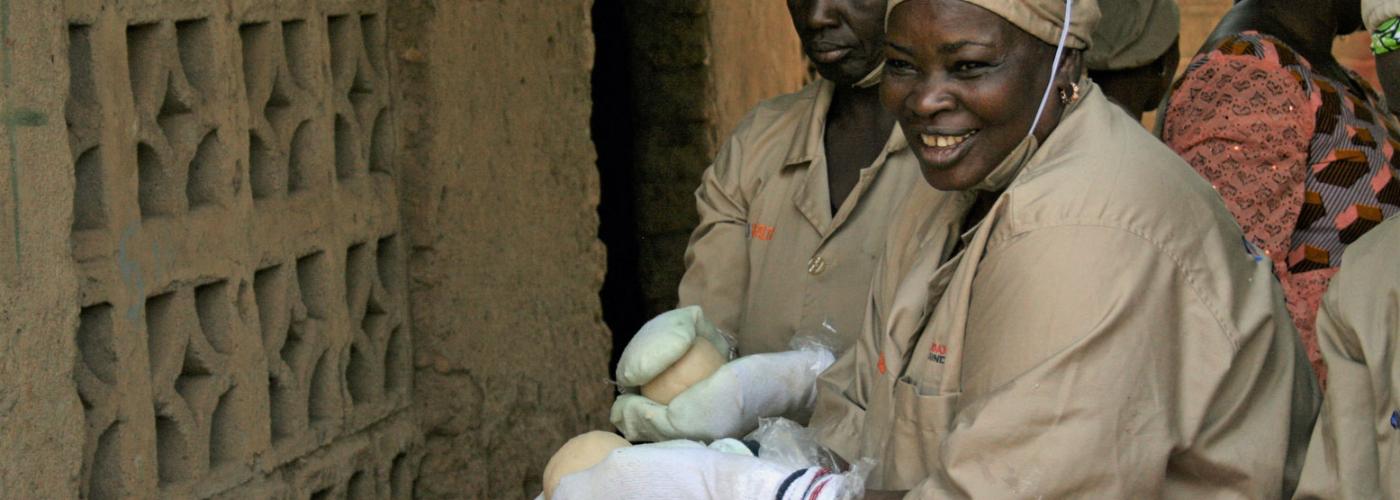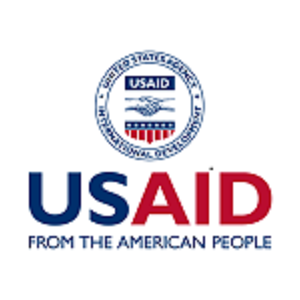WomenConnect Challenge Blog Series: Strategy 4 — Designing Creative, Women-Centric Technology
Image

This blog is part of the WomenConnect Challenge Blog Series: Introducing Strategies for Closing the Gender Digital Divide. USAID’s WomenConnect Challenge (WCC) is a global call for solutions to improve women’s participation in everyday life by meaningfully changing the ways women access and use technology. In the first round of the Challenge, WCC awarded nine grants to organizations working to identify and change the social and economic circumstances that keep women offline and under-empowered. Through close partnership with local awardee teams and community members, WCC has identified five proven strategies for closing the gender digital divide and increasing women’s empowerment. This blog explores one strategy at length.
Development professionals have long theorized that access to and training in digital technology can help empower women in marginalized communities around the world. “Women and technology,” mused Revi Sterling, Director of the WomenConnect Challenge (WCC). “The combination of the two should really be this amazing force multiplier that creates countless opportunities in sustainable development, and yet they continue to work against each other.”
In the “WomenConnect Challenge Steps to Success” webinar series, Sterling elaborated on the roots of the gender digital divide: “We continue to create technology from the top down. Maybe with the input of a few people… But the challenges of the apps, of all these digital solutions that we push—it's just absolutely missing the mark when we're trying to reach women. They're looking at these applications and new tech and saying, ‘I'm not going to use that, I don't trust that, I don't have the skills, I don't have the time…’”
To close the gender digital divide, programs must seek out and incorporate this feedback from their target users and then design technology options specifically tailored to women’s local realities. Dr. Indrani Medhi Thies, a principal researcher with Microsoft Research India who has long worked at the intersection of ethnography, technology, and low-income communities, stressed the importance of creative, women-centric design in all digital development efforts. She said, “The question that we asked in [our] research is: how do we create user interfaces such that any person who is not literate, has never been to school can upon first interaction with a mobile phone or a PC extract information that's relevant to his or her life with minimal or no external assistance.”
USAID’s WCC asked this same question and placed emphasis on the principles of human-centered design when selecting its awardees. “We need to understand that there are these barriers and this fear of empowered women that manifest themselves in the technology and how we deploy it,” detailed Sterling. Without accounting for these barriers and biases in technology design, subsequent programming will rarely address the roots of the problem.
For example, in some poor or rural communities, many women are illiterate or have low literacy levels and primarily speak local, oral languages in which traditional development content is often unavailable. Because of this lack of native language diversity on the internet, many women have limited access to technological instruction in their own languages, rendering most digital tools all but useless. For technology access to be of any value to women, it must be tailored to their particular needs, skills, and languages. WCC grantee Mali Health had this ethos in mind when, with the help of USAID funding, the organization incorporated new technologies into its existing programming.
“Mali Health has long been devoted to supporting women through local solutions for health care, for their economic empowerment, [and] for family and community cohesion… It isn't inherently a technology organization, but Mali Health realized that technology might have an ability to scale and sustain information dissemination in a way that otherwise just can't be done,” said Sterling.
To help educate and empower women in the peri-urban communities of Sabalibougou in Bamako, Mali, Mali Health used technology developed by Lenali, a Malian start-up, to create Kènèya Blon (or “Health Hall”), a free visual and audio social network providing access to local health information for women. Innovative video and audio platforms such as Kènèya Blon allow women who speak primarily oral languages to more readily communicate and learn.
The women who participated in the Mali Health programming—many of whom had never before accessed the internet or encountered content designed specifically for them—were able to listen to audio clips or watch short videos offering valuable health information. Some of the most popular topics included prenatal health, vaccines, malaria, and infectious diseases. Furthermore, through voice messages, women connected and shared information with each other and were able to reach health experts from Mali Health-affiliated clinics.
“We are not a technology organization,” emphasized Tara Hopkins, Co-Director of Mali Health and a panelist in the WCC webinar series. “We are a grassroots community health organization. So, our journey in the WomenConnect Challenge was something that we did not know how it would go, but it's one of the best experiences that we've had. As a learning organization and as an organization that is really committed to identifying solutions that work for women and are designed and led by women, I think we've done that through this partnership.”
Mali Health worked with 400 women from women’s profit-sharing collectives that produce goods like soaps, sanitary pads, juices, and peanut butter. The Mali Health team trained the women in the collectives on the use of technology and the social network, helping them to understand the internet, access health and wellness information, and build their confidence in using technology to access this information. Mali Health also collected feedback from the women to ensure the technology and content was usable and relevant.
“As a health organization that's designing community-based interventions, everything we do starts with assessing needs on the ground and working alongside women on a daily basis not just to design programs but to improve them, to think about ways that we can alter them to make them more impactful and more effective,” said Hopkins. “We received some feedback from women in the co-design stages that we wanted to pursue… Our app is a completely voice-based interface that allows women to download basic health messages on different topics, and then one of the features that we added was the ability to record a question for a doctor and interact with a doctor within this voice-based interface. That became one of the most popular features and really a core function of our technology. And that came completely from the women that we served.”
Since it is difficult for the participants to reach health centers in person, the Kènèya Blon platform allowed women to correspond digitally with medical professionals, enabling families to address health concerns without leaving home. Mali Health’s telehealth opportunity was not just more cost-effective and efficient but also crucial to protecting rural communities amidst a global pandemic. “This platform has consolidated my knowledge. It permits me to interact with health professionals without leaving home,” shared one platform user. “It is through the platform that I had the first information about Covid-19 even before awareness information came through on radio or television. I shared the messages with members of my family, which meant we were ahead of others on prevention measures.”
Mali Health’s WCC project demonstrated that technology programs targeting communities with low literacy and low digital literacy can be effective when designed creatively and attentively with the intended audience in mind. Mali Health reported that, in the final study at the culmination of USAID grant activities, 65% of women surveyed say that Kènèya Blon had increased their rate of use of ICT, and every woman surveyed displayed a high level of knowledge about maternal, neonatal, and child health topics. Mali Health’s and USAID’s commitment to participatory design, adoption of adaptive learning practices, and incorporation of end user feedback provide an instructional roadmap for future digital development efforts.
“The benefit of a truly inclusive design process is an end result that is genuinely well suited to the needs of the community,” said Sterling. “User-centric design is not just a good principle, but also the best solution for technical innovation and actual development.”
By Kendra Poole, Communications Specialist, DAI’s Digital Frontiers Project
The WomenConnect Challenge is implemented by DAI’s Digital Frontiers project, a buy-in mechanism that works closely with USAID Missions and Bureaus, the private sector, and international and local development organizations to identify successful and sustainable digital development approaches and scale their impact globally.


